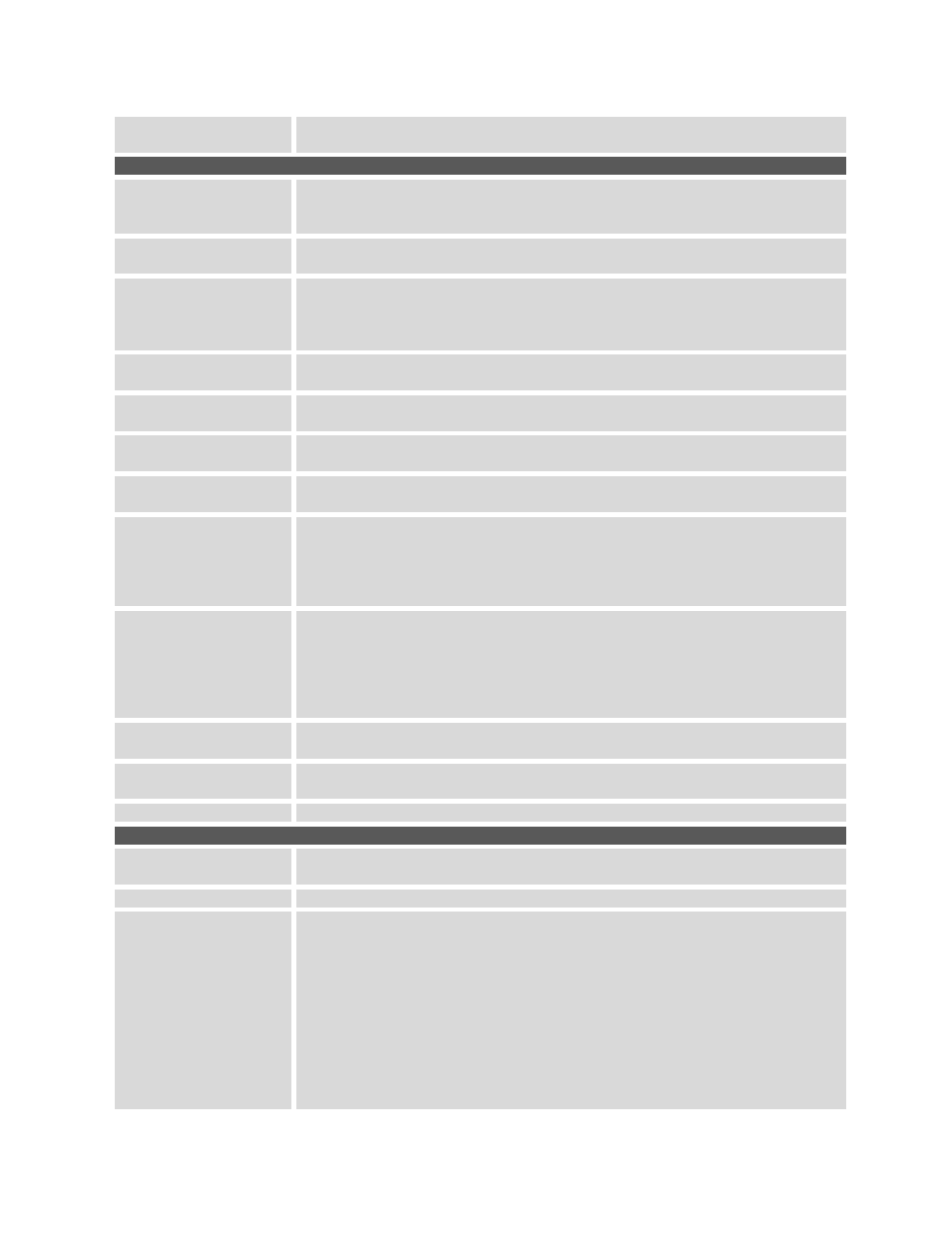Grandstream GXP1610 Administration Guide User Manual
Page 27

GXP1610/GXP1620/GXP1625/GXP1628
Administration Guide
Page 26 of 49
Authenticate Incoming
INVITE
If set to "Yes", the phone will challenge the incoming INVITE for authentication
with SIP 401 Unauthorized response. The default setting is "No".
Account x ->Audio Settings
Send DTMF
Specifies the mechanism to transmit DTMF digits. There are 3 supported
modes: in audio which means DTMF is combined in the audio signal (not very
reliable with low-bit-rate codecs), via RTP (RFC2833), or via SIP INFO.
DTMF Payload Type
Configures the payload type for DTMF using RFC2833. The default value is
101.
Preferred Vocoder
6 different vocoder types are supported on the phone, including G.711 U-law
(PCMU), G.711 A-law (PCMA), G.723.1
(pending), G.729A/B, G.722 (wide
band), and G726-32. Users can configure vocoders in a preference list that is
included with the same preference order in SDP message.
Use First Matching
Vocoder in 200OK SDP
When set to "Yes", the device will use the first matching vocoder in the
received 200OK SDP as the codec. The default setting is "No".
Disable Multiple m line
in SDP
If enabled, the phone always responses 1 m line in SDP regardless multiple
m lines are offered.
SRTP Mode
Enables the SRTP mode based on your selection. The default setting is
"Disabled".
Symmetric RTP
Defines whether symmetric RTP is supported or not. The default setting is
"No".
Silence Suppression
Controls the silence suppression/VAD feature of the audio codec except for
G.723
(pending) and G.729. If set to "Yes", when silence is detected, a small
quantity of VAD packets (instead of audio packets) will be sent during the
period of no talking. If set to "No", this feature is disabled. The default setting
is "No".
Voice Frames Per TX
Configures the number of voice frames transmitted per packet. When
configuring this, it should be noted that the "ptime" value for the SDP will
change with different configurations here. This value is related to the codec
used and the actual frames transmitted during the in payload call. For end
users, it is recommended to use the default setting, as incorrect settings may
influence the audio quality.
G.726-32 Packing
Mode
Selects “ITU” or “IETF” for G.726-32 packing mode. The default setting is
“IETF”.
Jitter Buffer Type
Selects either Fixed or Adaptive based on network conditions. The default
setting is "Adaptive".
Jitter Buffer Length
Defines jitter buffer length based on network conditions.
Account x -> Call Settings
Early Dial
Selects whether or not to enable early dial. If it's set to "Yes", the SIP proxy
must support 484 response. The default setting is "No".
Dial Plan Prefix
Sets the prefix added to each dialed number.
Dial Plan
A dial plan establishes the expected number and pattern of digits for a
telephone number. This parameter configures the allowed dial plan for the
phone.
Dial Plan Rules:
1.
Accepted Digits: 1,2,3,4,5,6,7,8,9,0 , *, #, A,a,B,b,C,c,D,d;
2.
Grammar: x - any digit from 0-9;
a)
xx+ - at least 2 digit numbers
b)
xx - only 2 digit numbers
c)
^ - exclude
d)
[3-5] - any digit of 3, 4, or 5
